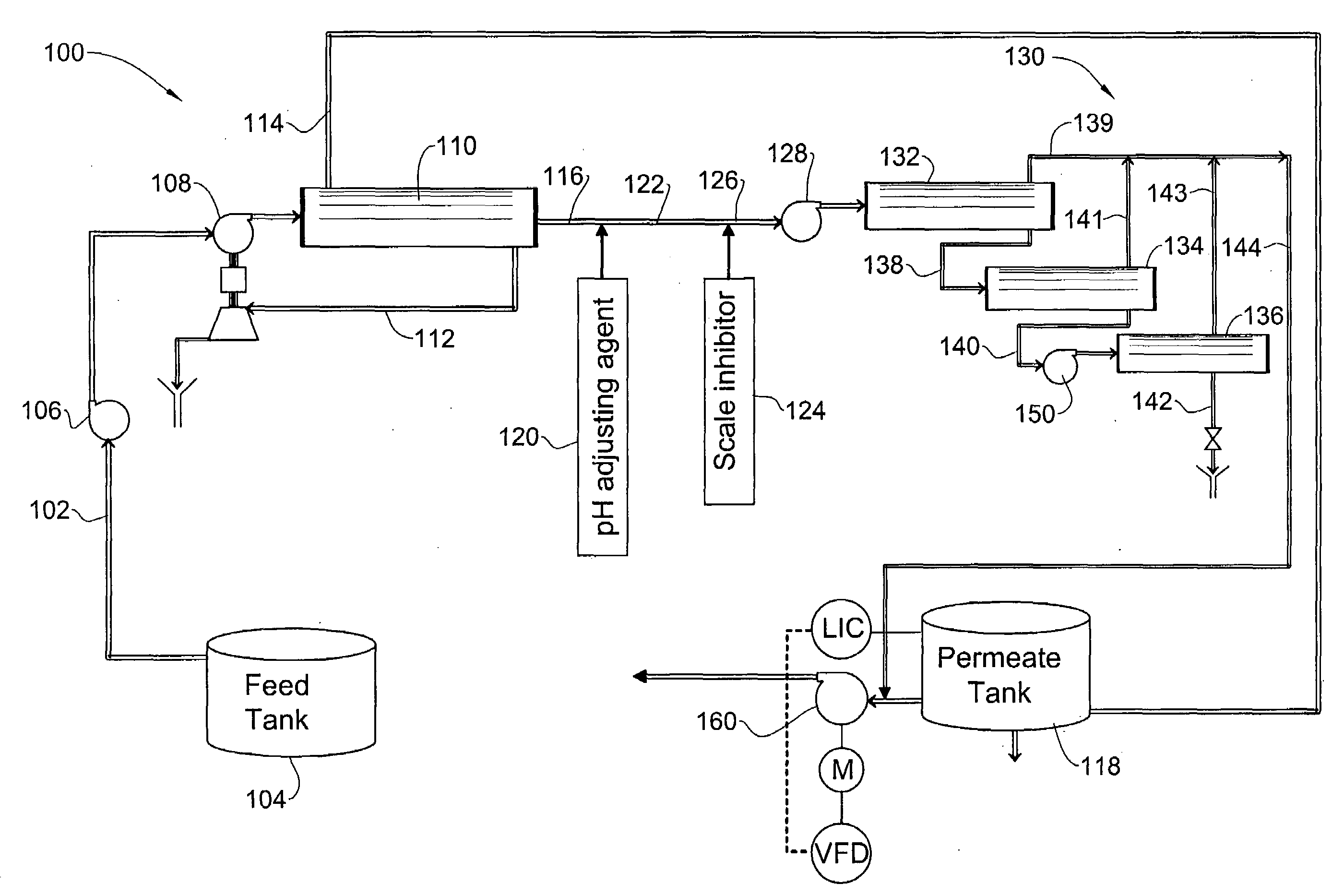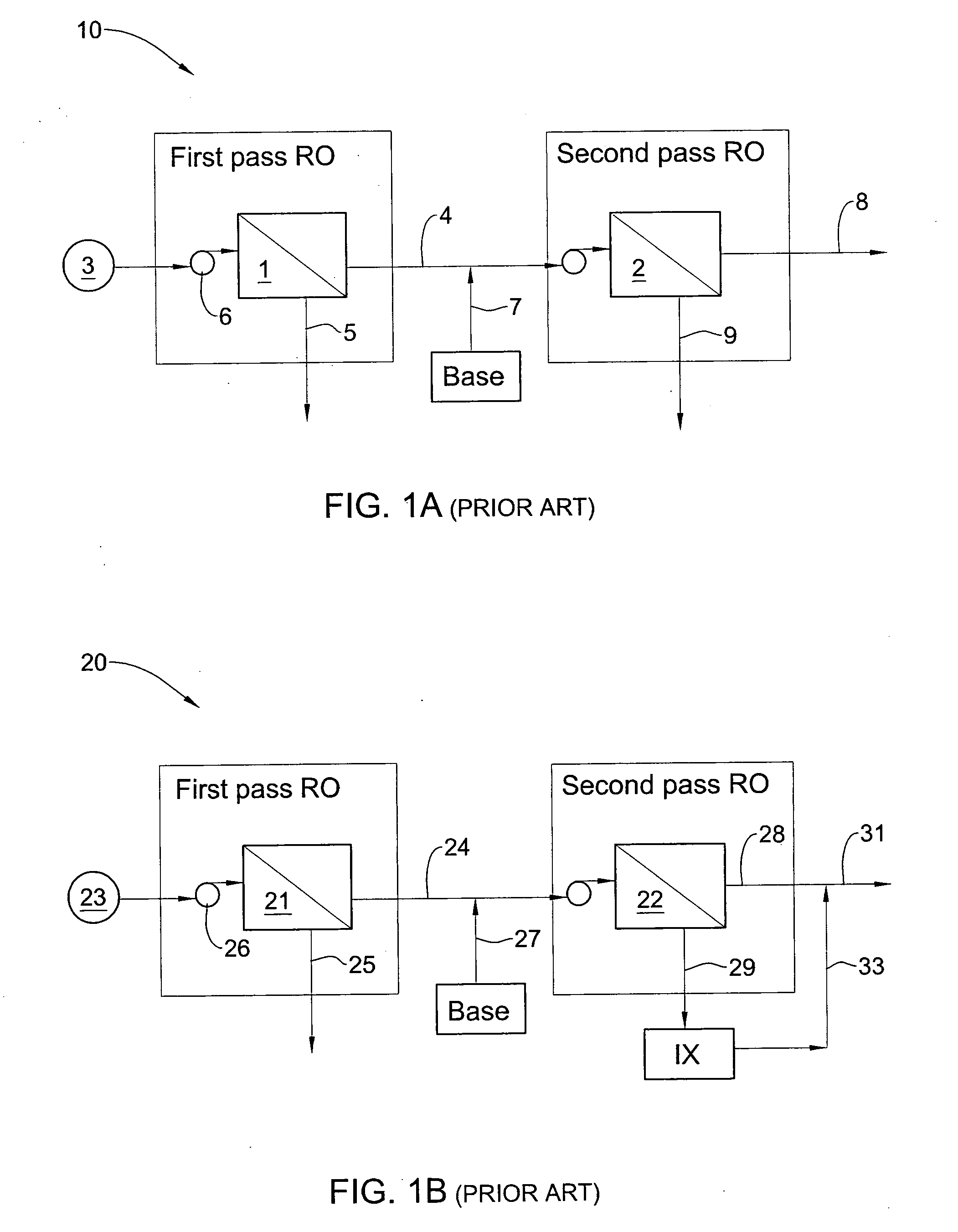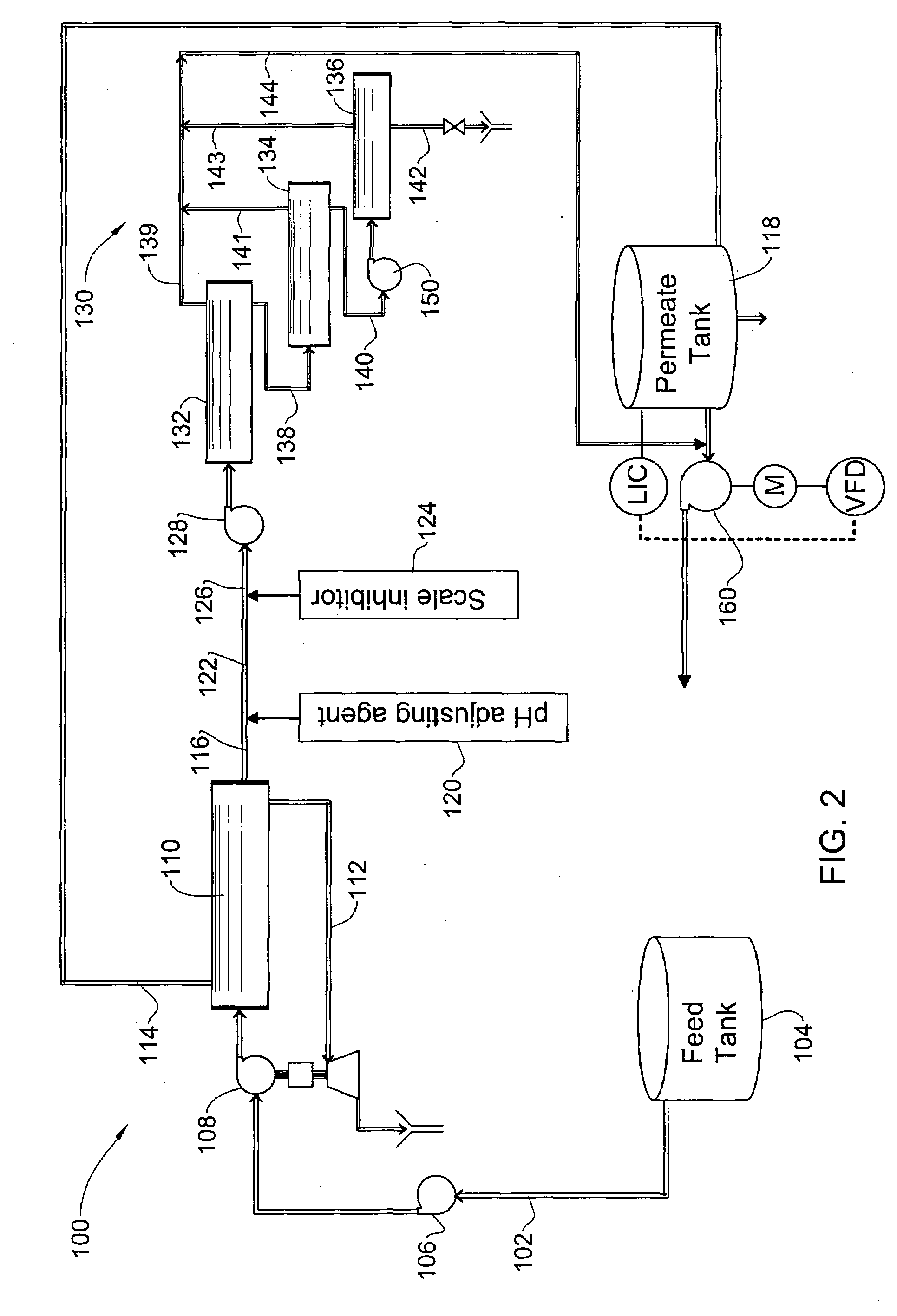Multiple stage reverse osmosis method for removing boron from a salinated fluid
a reverse osmosis and salination fluid technology, applied in the field of water treatment, can solve the problems of reducing the overall recovery rate, and significantly affecting the cost of the final purified water recovery rate of the second pass ro, so as to increase the recovery rate of water and reduce the concentration of boron
- Summary
- Abstract
- Description
- Claims
- Application Information
AI Technical Summary
Benefits of technology
Problems solved by technology
Method used
Image
Examples
Embodiment Construction
[0030]The present invention is directed to methods based on a two pass reverse osmosis (RO) technology, for substantially decreasing boron concentration and salinity in high-salinity, boron-containing liquids, such as seawater, while increasing the recovery rate of the treated water.
[0031]By manipulating the first pass permeate obtained, after passing of a high salinity liquid via a first pass RO device, with a combination of a pH adjusting agent and a scale inhibitor, a significant increase in the recovery rate from the second pass RO system is achieved, which results in an overall higher recovery rate as compared to hitherto known methods. In addition, said treatment also provides, at the end of the desalination processing a liquid with a significantly lower boron concentration. Thus, the methods of the present invention provide a dual effect of increasing recovery rate of the liquid in a desalination process concomitant with reducing boron concentration therein.
[0032]The term “hi...
PUM
| Property | Measurement | Unit |
|---|---|---|
| temperatures | aaaaa | aaaaa |
| pressure | aaaaa | aaaaa |
| temperature | aaaaa | aaaaa |
Abstract
Description
Claims
Application Information
 Login to View More
Login to View More - R&D
- Intellectual Property
- Life Sciences
- Materials
- Tech Scout
- Unparalleled Data Quality
- Higher Quality Content
- 60% Fewer Hallucinations
Browse by: Latest US Patents, China's latest patents, Technical Efficacy Thesaurus, Application Domain, Technology Topic, Popular Technical Reports.
© 2025 PatSnap. All rights reserved.Legal|Privacy policy|Modern Slavery Act Transparency Statement|Sitemap|About US| Contact US: help@patsnap.com



